With warm temperatures arriving late in the spring it’s unsurprising that the garden’s azaleas have flowered a bit late. Several hot days in early April pushed dogwoods into bloom exactly when they’re expected (if there’s such a thing), but this was followed by delightful cool weather that has caused the azaleas’ delay from their usual late April blooming time.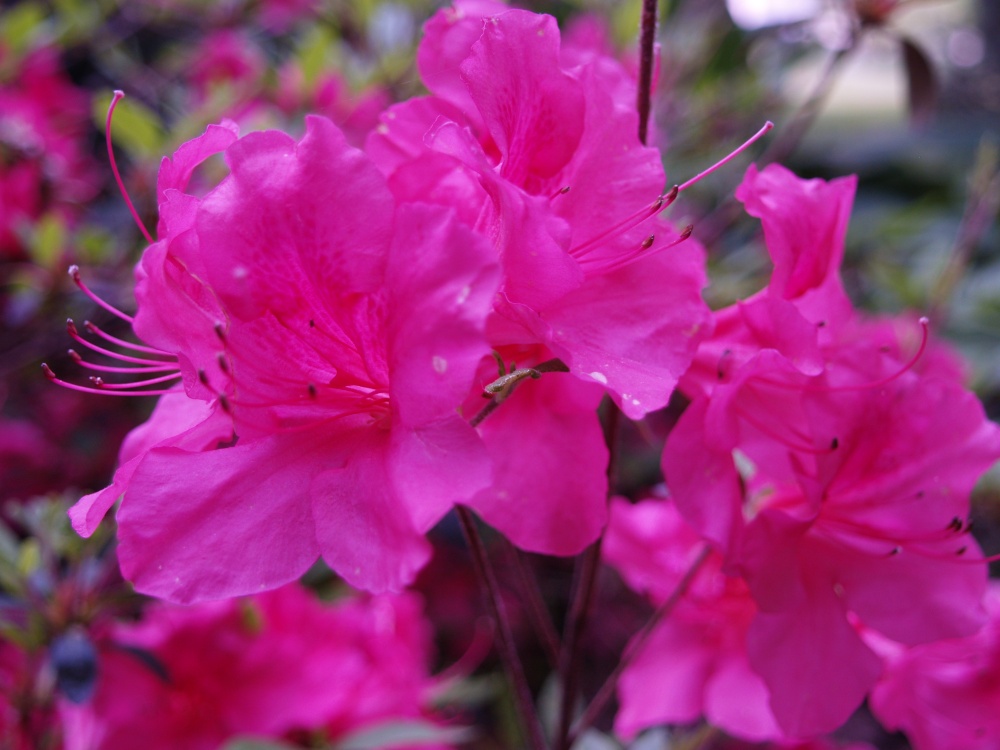
I’m pleased that the evergreen azaleas are flowering at all. In previous updates I’ve chronicled my failure to spray the deer repellent in late autumn, which was predictably followed by deer nibbling all foliage on azaleas, camellias, and aucubas through the winter. I suspected that in their haste to devour the leaves that deer would have also chomped the flower buds at the branch tips, but many of the azaleas are blooming as if nothing happened.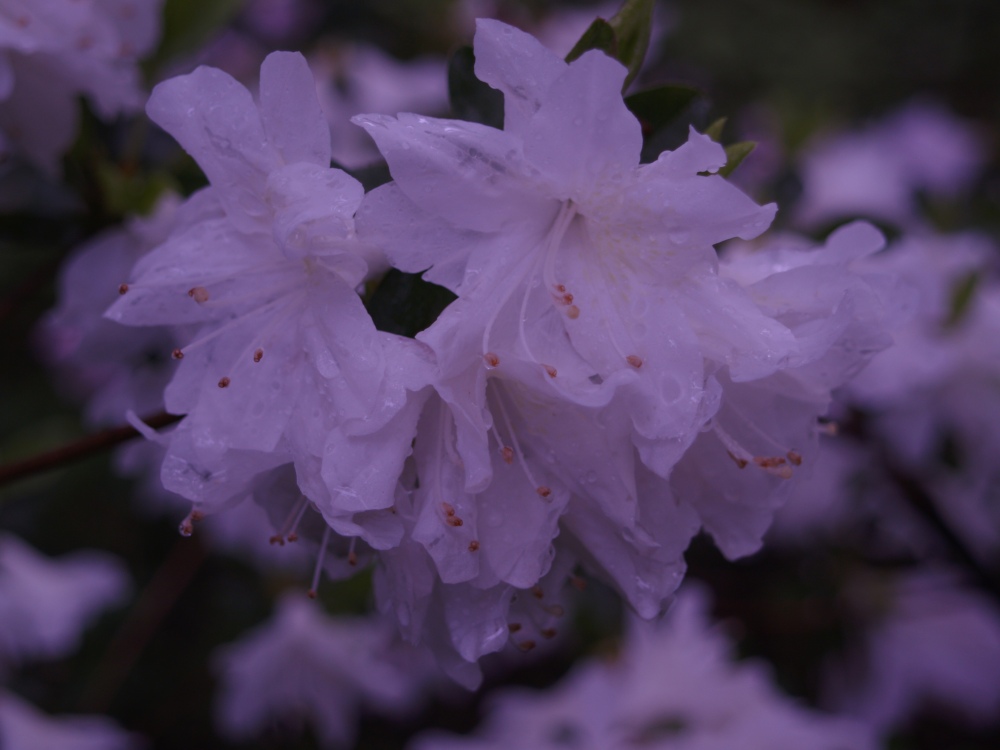
With the exception of a tall and wide spreading Delaware Valley White (above), and another unidentified pale pink that peeks from beneath the white flowered azalea, the remainder of the azaleas in the garden are from the Encore group that flowers in the spring and again in late summer into early autumn. Problems with lacebugs twenty years ago convinced me to give up on other azaleas, and only when Encores were introduced was I persuaded to give them another try. After a slow start when a few varieties were weeded out as reluctant to flower a second time, I’m pleased to recommend Encores to the exclusion of typical azaleas. Except Delaware Valley, that is, which shares the Encores’ resistance to lacebugs.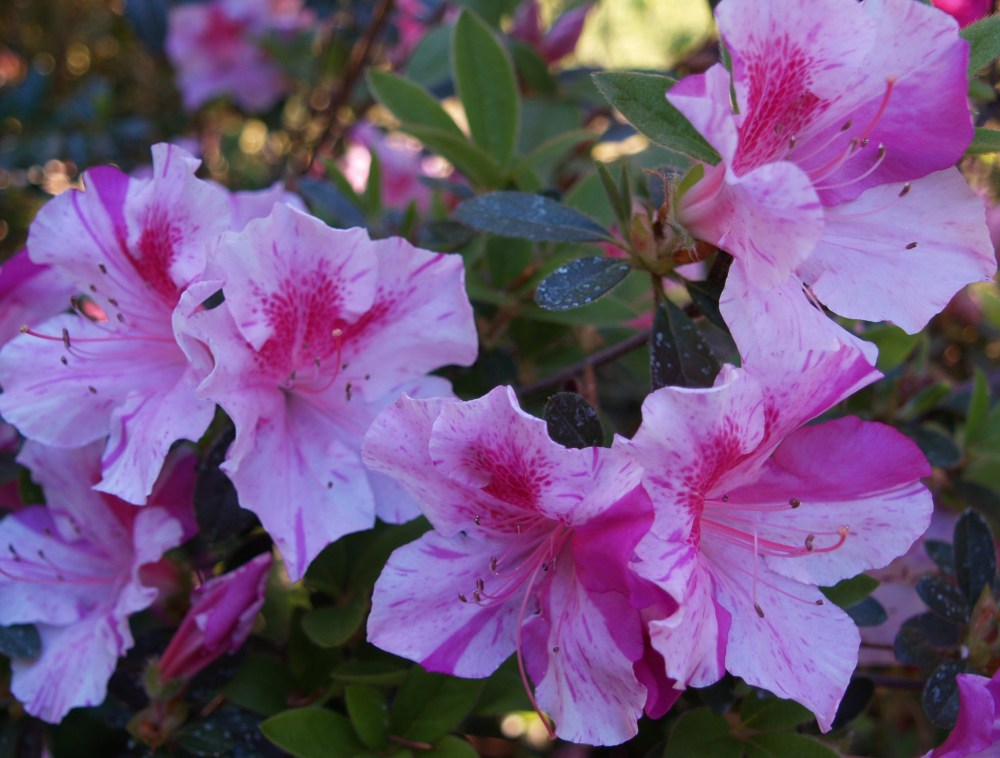
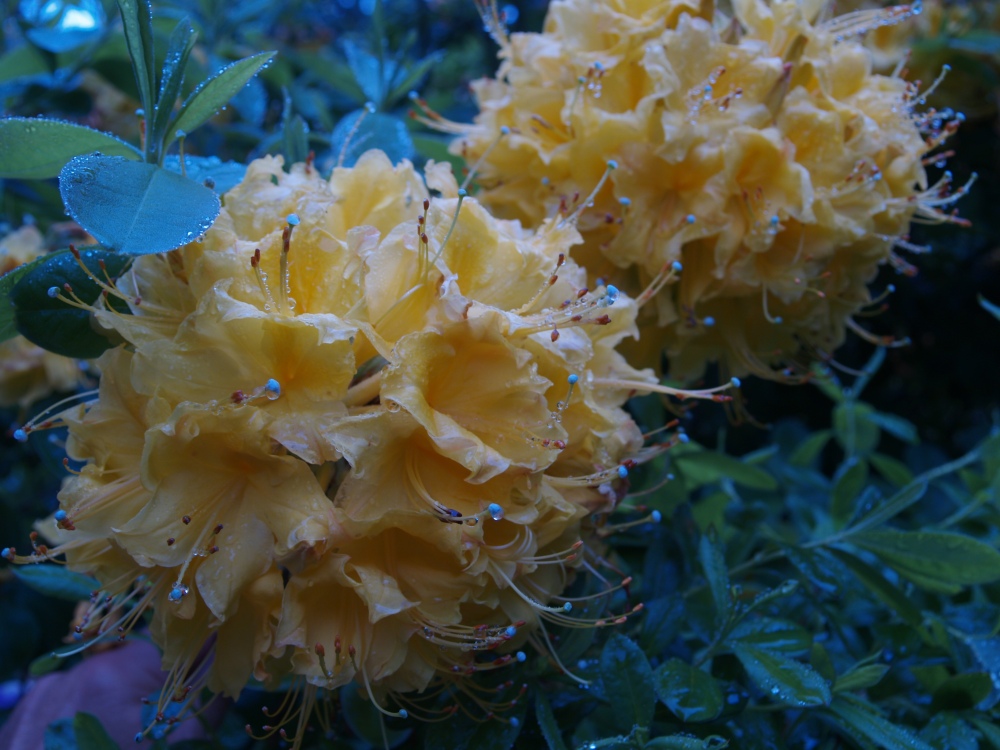 The various deciduous azaleas should not be considered in the same manner as the evergreens. Most are tall with an upright form, and while evergreen azaleas are often suitable for the front of the garden, the deciduous types are more appropriate for the back where they tower over most other shrubs. But, not too far back, and certainly not where their fragrant and brightly colored red, orange, and yellow blooms cannot be enjoyed. In most years the blooms of the deciduous azaleas follow the evergreens, but this spring they coincide for a marvelous display in mid May.
The various deciduous azaleas should not be considered in the same manner as the evergreens. Most are tall with an upright form, and while evergreen azaleas are often suitable for the front of the garden, the deciduous types are more appropriate for the back where they tower over most other shrubs. But, not too far back, and certainly not where their fragrant and brightly colored red, orange, and yellow blooms cannot be enjoyed. In most years the blooms of the deciduous azaleas follow the evergreens, but this spring they coincide for a marvelous display in mid May.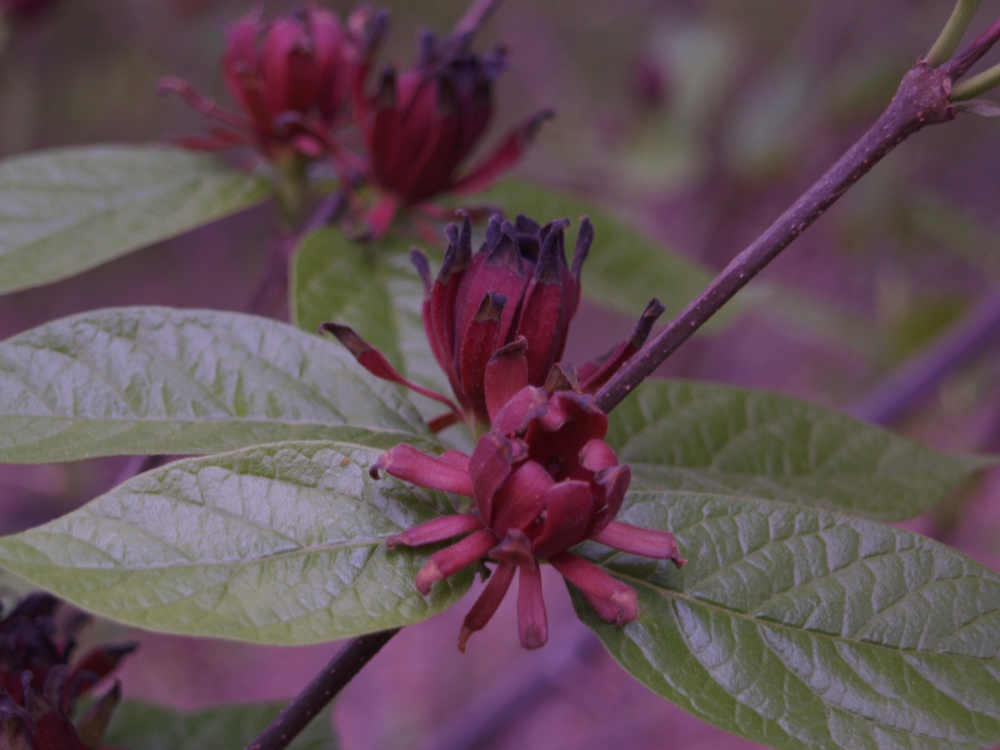
The fragrant flowers of sweetshrub (Calycanthus floridus, above) are unremarkable by comparison to azaleas, but the unusual red-brown blooms have a unique charm. This native shrub is well adapted to sun or part shade, and it manages nicely in my garden with root competition from neighboring tulip poplars and swamp maples. The yellow flowered ‘Athens’ (below) blooms two weeks later, and is equally undemanding.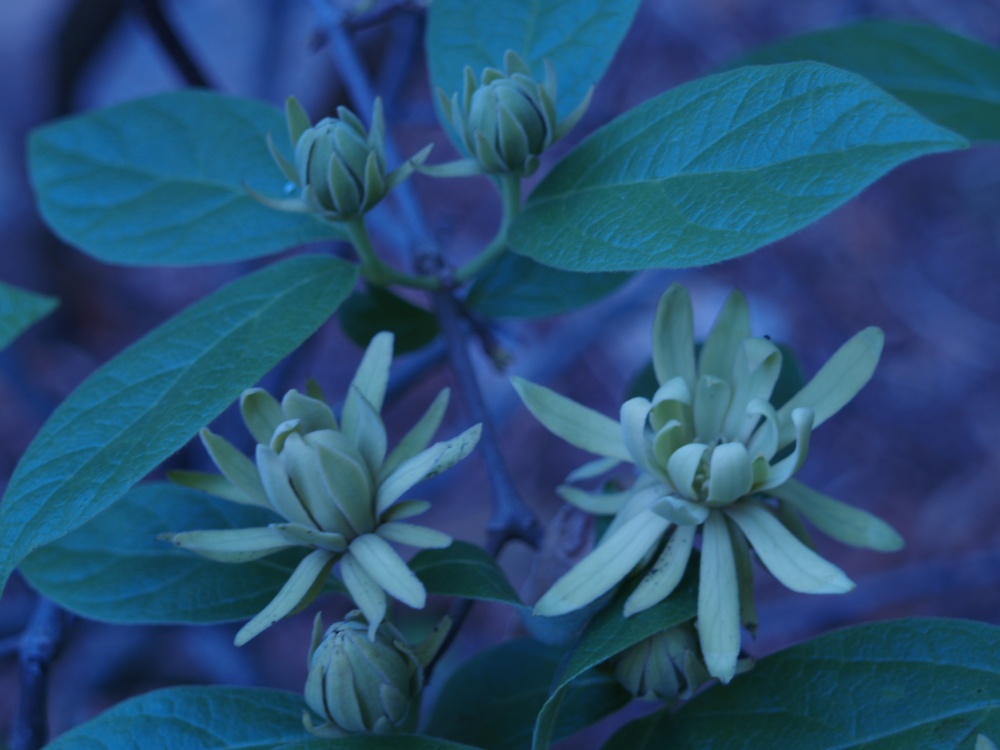
The foliage of Rainbow leucothoe (Leucothoe fontanesiana ‘Rainbow’, below) is streaked with white, and with lily of the valley blooms this should be quite a delightful evergreen shrub. But, it seems to fall just short for me. The foliage is not striking, but still, it is carefree, and if given space enough to spread its arching stems, leucothoe is a fine addition to the garden. Its common names, dog hobble and fetterbush, are head scratchers.
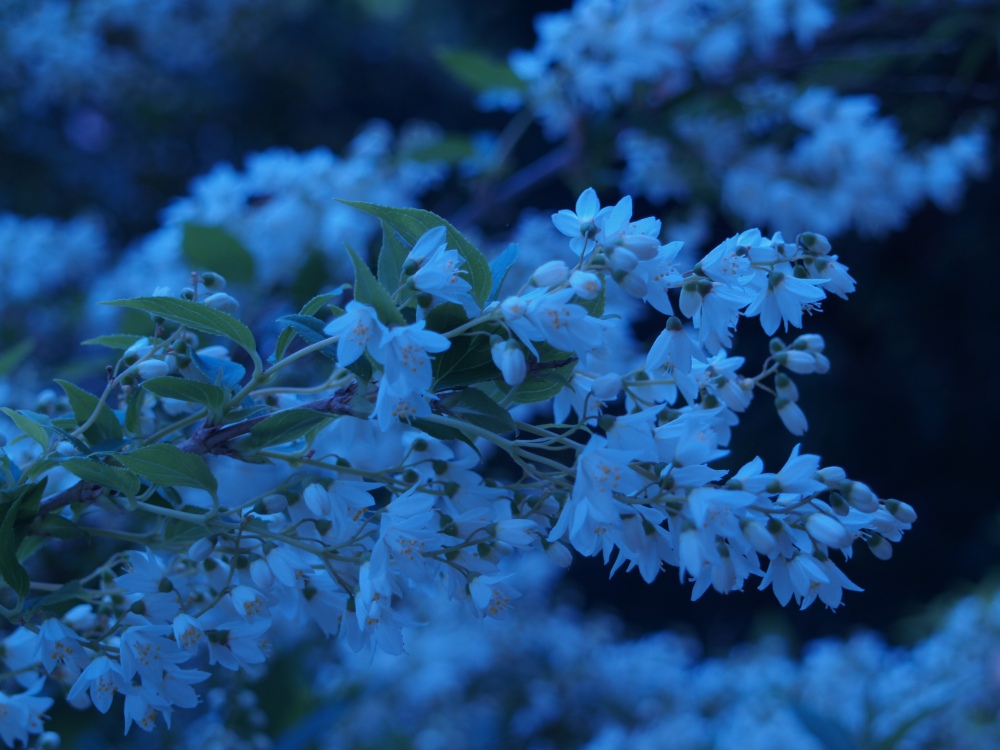 Deutzia ‘Nikko’ (Deutzia garcilis ‘Nikko’, above) is under utilized as a ground cover, and though it’s deciduous, it has sufficient attributes to earn a prominent place in the garden where a massing is a splendid sight through much of May. The shrub is covered in white blooms, followed by pleasant green foliage. The yellow leafed ‘Chardonnay Pearls’ (below) grows just a bit taller, but yellow foliage is best used in moderation, so it is perhaps best used in smaller numbers rather than in masses.
Deutzia ‘Nikko’ (Deutzia garcilis ‘Nikko’, above) is under utilized as a ground cover, and though it’s deciduous, it has sufficient attributes to earn a prominent place in the garden where a massing is a splendid sight through much of May. The shrub is covered in white blooms, followed by pleasant green foliage. The yellow leafed ‘Chardonnay Pearls’ (below) grows just a bit taller, but yellow foliage is best used in moderation, so it is perhaps best used in smaller numbers rather than in masses.

There is so much of interest in the garden in May that it cannot be included in only one chapter, so when I return in a few days we’ll catch up on the rest.
One Comment Add yours